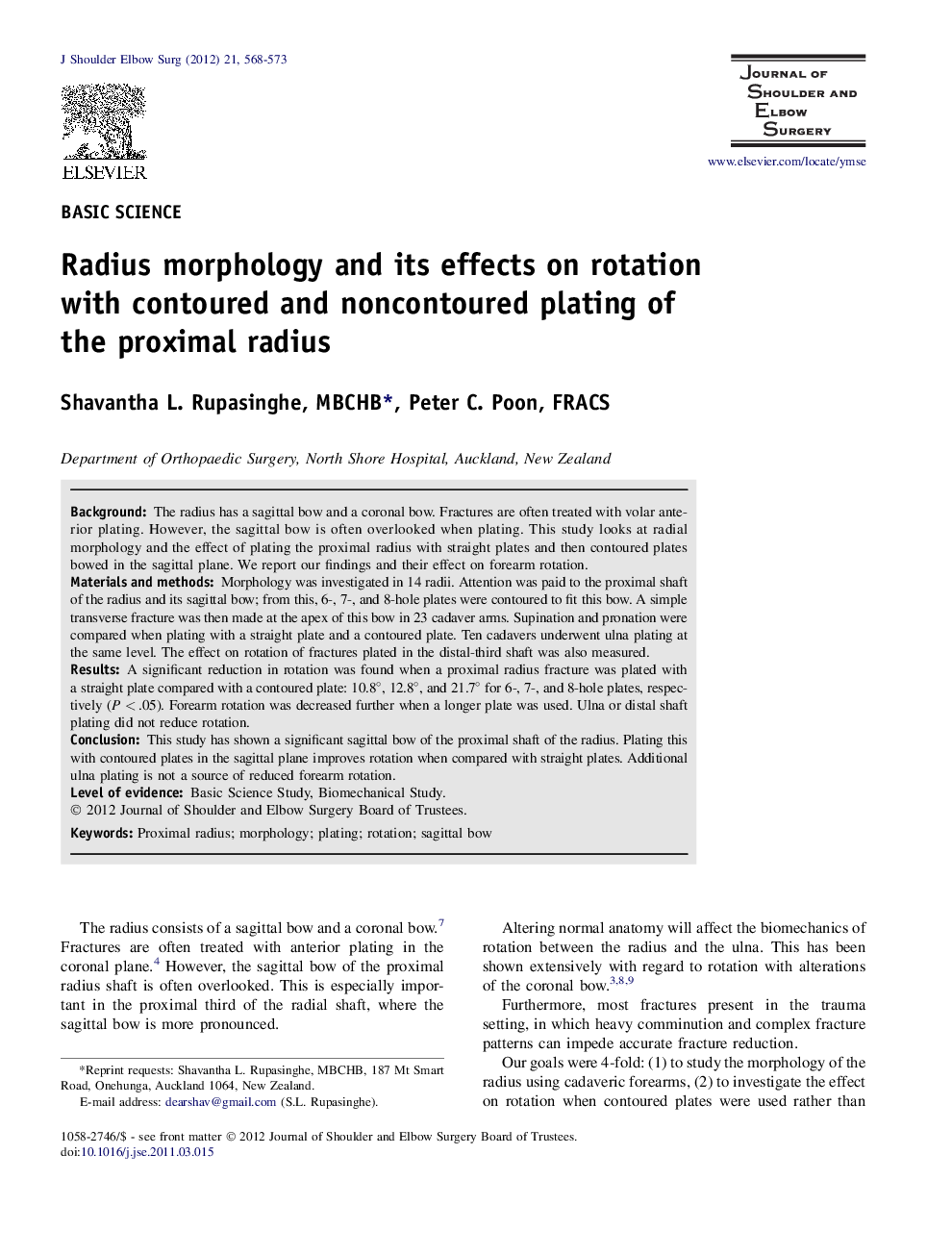| Article ID | Journal | Published Year | Pages | File Type |
|---|---|---|---|---|
| 4074561 | Journal of Shoulder and Elbow Surgery | 2012 | 6 Pages |
BackgroundThe radius has a sagittal bow and a coronal bow. Fractures are often treated with volar anterior plating. However, the sagittal bow is often overlooked when plating. This study looks at radial morphology and the effect of plating the proximal radius with straight plates and then contoured plates bowed in the sagittal plane. We report our findings and their effect on forearm rotation.Materials and methodsMorphology was investigated in 14 radii. Attention was paid to the proximal shaft of the radius and its sagittal bow; from this, 6-, 7-, and 8-hole plates were contoured to fit this bow. A simple transverse fracture was then made at the apex of this bow in 23 cadaver arms. Supination and pronation were compared when plating with a straight plate and a contoured plate. Ten cadavers underwent ulna plating at the same level. The effect on rotation of fractures plated in the distal-third shaft was also measured.ResultsA significant reduction in rotation was found when a proximal radius fracture was plated with a straight plate compared with a contoured plate: 10.8°, 12.8°, and 21.7° for 6-, 7-, and 8-hole plates, respectively (P < .05). Forearm rotation was decreased further when a longer plate was used. Ulna or distal shaft plating did not reduce rotation.ConclusionThis study has shown a significant sagittal bow of the proximal shaft of the radius. Plating this with contoured plates in the sagittal plane improves rotation when compared with straight plates. Additional ulna plating is not a source of reduced forearm rotation.
